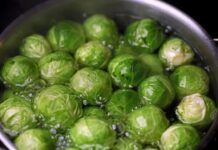Freezing cilantro is a practical way to preserve its fresh, vibrant flavor for later use. This method is especially helpful when you have an abundance of cilantro and want to avoid waste. While cilantro can lose some of its texture after freezing, it still retains its flavor and is suitable for cooked dishes, sauces, and salsas. Here’s a comprehensive guide on how to freeze cilantro effectively:
1. Selecting and Preparing the Cilantro
Choosing the Best Cilantro
- Freshness: Select fresh, vibrant green cilantro with no signs of wilting, yellowing, or browning.
- Organic Option: If possible, choose organic cilantro to avoid pesticides. However, both organic and non-organic can be used.
Washing and Drying
- Rinse Thoroughly: Wash the cilantro under cold running water to remove any dirt or residues. Gently swish the cilantro around to clean all the leaves and stems.
- Dry Completely: Dry the cilantro thoroughly using a salad spinner or by gently patting it with a clean towel. Removing excess moisture is crucial to prevent ice crystals from forming during freezing.
2. Methods for Freezing Cilantro
a. Freezing Cilantro Leaves Whole
- Separate Leaves from Stems: Remove the leaves from the stems. While you can freeze the stems, they tend to be tougher and less flavorful than the leaves.
- Lay Out the Leaves: Spread the cilantro leaves in a single layer on a baking sheet lined with parchment paper.
- Flash Freeze: Place the baking sheet in the freezer and freeze the leaves for 1-2 hours, or until completely frozen. This step helps to prevent the leaves from clumping together.
- Transfer to a Container: Once frozen, transfer the cilantro leaves to an airtight container or a freezer bag. Remove as much air as possible from the bag before sealing.
- Label and Store: Label the container or bag with the date and store it in the freezer. Use the frozen cilantro within 6 months for the best quality.
b. Freezing Cilantro in Ice Cube Trays
- Chop the Cilantro: Finely chop the cilantro leaves and stems (if using).
- Fill Ice Cube Trays: Place the chopped cilantro into ice cube trays, filling each compartment about halfway.
- Add Water or Olive Oil: Fill the rest of each compartment with water or olive oil. Using water is suitable for most dishes, while olive oil can be a good option for soups, sauces, or sautéing.
- Freeze: Place the ice cube trays in the freezer until the cilantro cubes are fully frozen.
- Transfer to a Container: Pop the cilantro cubes out of the trays and transfer them to a freezer bag or airtight container. Label and date the container.
- Store: Keep the cubes in the freezer, ready to be used as needed. They can last up to 6 months.
c. Pureeing Cilantro
- Blend the Cilantro: Place washed and chopped cilantro in a blender or food processor. Add a little water or olive oil to facilitate blending.
- Puree: Blend until you achieve a smooth consistency.
- Freeze in Portions: Pour the cilantro puree into ice cube trays or small portions in freezer bags.
- Label and Store: Once frozen, transfer the cubes or portions to a labeled freezer bag or container and store in the freezer.
3. Using Frozen Cilantro
Frozen cilantro is best used in cooked dishes, as the freezing process changes its texture. Here are some common uses:
- Soups and Stews: Add a cube or a handful of frozen cilantro leaves to soups and stews for a burst of fresh flavor.
- Salsas and Sauces: Incorporate frozen cilantro into salsas, chutneys, or sauces. The flavor will be similar to fresh cilantro.
- Marinades and Dressings: Use the cilantro puree or chopped leaves in marinades or salad dressings.
- Curries and Stir-Fries: Add frozen cilantro to curries, stir-fries, or rice dishes towards the end of cooking.
4. Tips and Considerations
- Texture Change: Frozen cilantro loses its crispness and can become limp. It’s best suited for recipes where the texture of the cilantro is less important.
- Avoid Re-Freezing: Once thawed, use the cilantro immediately and avoid re-freezing, as repeated freezing and thawing can degrade the quality.
- Label and Rotate: Always label your frozen cilantro with the date and use older batches first to maintain the best quality.










